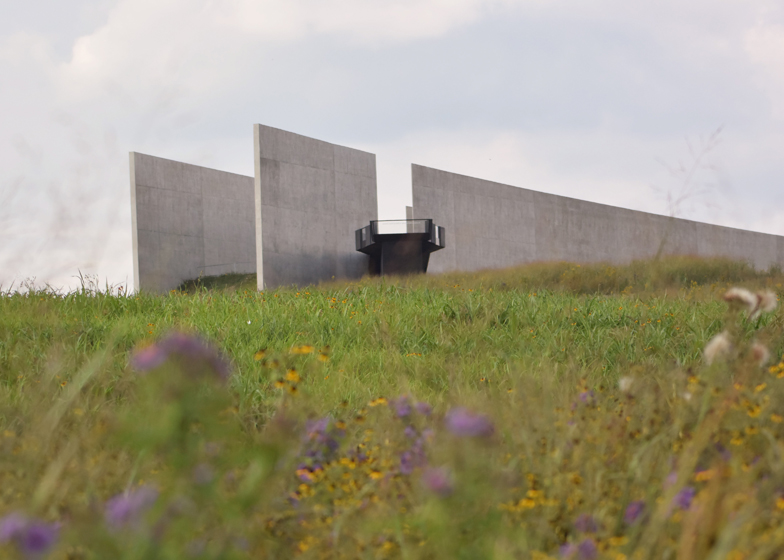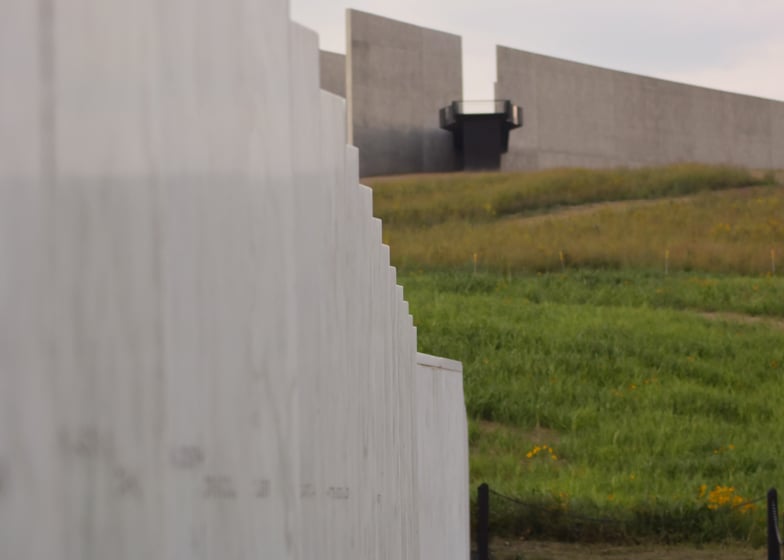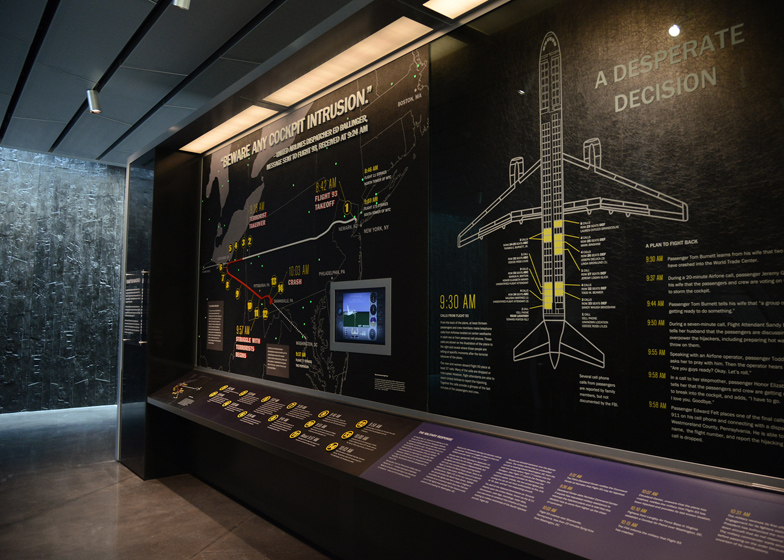The Flight 93 crash-site memorial built to commemorate the victims of 9/11 opened to the public today in Shanksville, Pennsylvania, marking the 14th anniversary of the attacks.
The Flight 93 National Memorial is constructed on one of the three sites that were attacked on 11 September 2001 – the others being the World Trade Center in New York and the Pentagon in Washington DC. It is the last to be memorialised.
Designed by Paul Murdoch Architects and Nelson Byrd Woltz Landscape Architects, the project includes a visitors' centre set between two 4o-foot-high (12.19 metres) concrete walls, the height of which symbolises the 40 victims on board the hijacked Flight 93.
The walls follow the arc of the plane's final descent and a large boulder marks the point of impact. The name of each victim is engraved on a pleated marble wall.
Inside the visitors' centre, viewers are confronted with graphic reminders of the crash, including charred remnants of the plane and personal effects, as well as voicemail recordings of the passengers. Each victim is commemorated through interactive exhibits of their lives.
The passengers of Flight 93 fought back against the highjackers, eventually causing the plane to crash in a rural Pennsylvania field, a mere 20 minutes flight from Washington DC. The attackers were planning to smash the plane into the Capitol building.
"It's important to me that the visitor sees what these 40 people took on, to take a stand for freedom, to take the kind of stand that cost their lives," Debby Borza, whose daughter was the youngest female passenger on Flight 93, told the Washington Post.
The crash site itself is considered sacred ground by the victims' families, as very few human remains were recovered from the area. This Field of Honor is left open, and edged by 40 groves of 40 trees. The memorial is part of a 2200 acre (898 hectare) National Park, operated by the National Parks Service (NPS).
Paul Murdoch and Nelson Byrd Woltz won a competition to design the scheme in September 2007, and were selected from a pool of more than 1000 entries. Elements of the landscape remain to be completed and a 93-foot-tall (28.35 metres) bell tower has yet to be constructed.
The National September 11 Memorial Museum, consisting of an entry pavilion by Scandinavian firm Snøhetta and an underground museum by New York architecture studio Davis Brody Bond, opened in May 2014 at the World Trade Center site Manhattan.
Architect Michael Arad and landscape architect Peter Walker also designed a pair of large void pools to occupy the exact footprints of the destroyed twin towers, which opened in 2011.
Photography is by Tami A Heilemann for NPS.











